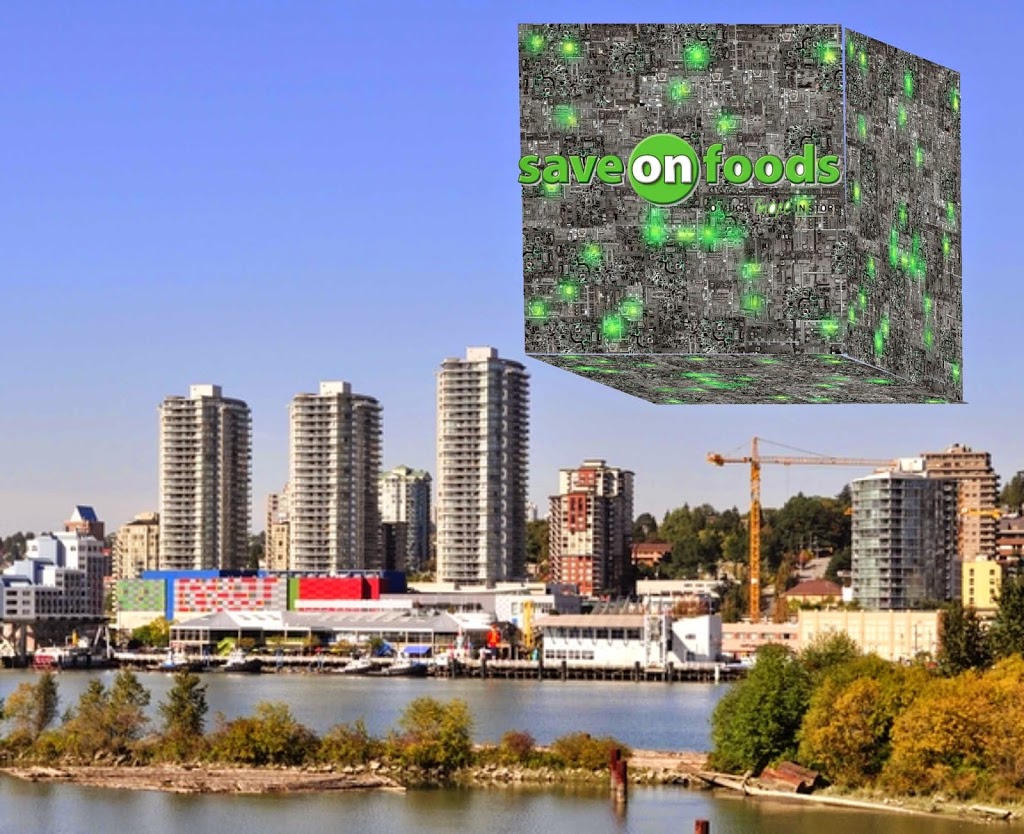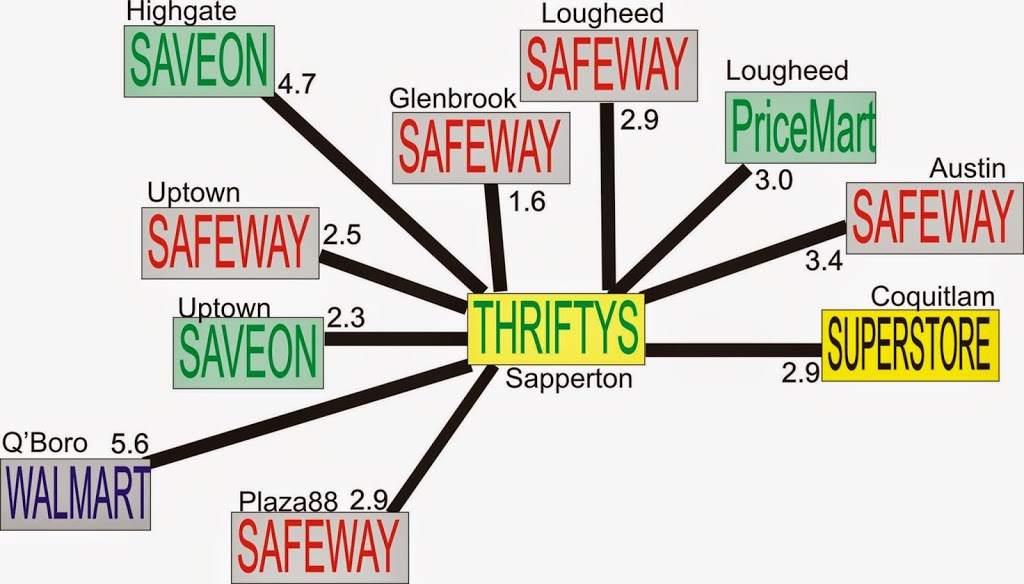With a spate of new (but remarkably familiar) signs going up around town, and everyone wondering about how increased consolidation could possibly result in increased competition, I have also been thinking about the changes in the New West retail world, and what they may mean.
Admittedly, I may be the wrong person to opine on this. I pretty much hate shopping, and by Brand Loyalty gland seems to have swole up and broke. Allow me to explain.
I spent much of my young life working in retail. My parents were small business owners, and I worked around the shop from a young age. Even when not working around the shop, it was the place I hung out at after school in those pre-teen years. Eventually I was cleaning shop, merchandising goods, helping with inventory and sales, waxing skis and fixing bikes. Although I did a variety of other jobs when I was young (pulp mill, bike courier, logistics, dishwashing and kitchen prep, etc.), pretty much all of my beer money through my undergrad came from working in bike shops – I loved working in bike shops. It may be because of these retail experiences that I am kind of cynical about retail sales, and generally dislike most retail experience decades later. I suspect it is some combination of subconsciously seeking the approval of the retail salesperson (wanting to not be one of those “bad customers” we criticized in the back room) and my internal critique of everything that a retail salesperson is doing to persuade money from me. I’m sure a therapist could work these knots out of my psyche, but as the end result is my buying less and living a more affordable lifestyle, I’m not sure it is top of the list of personality problems I need solved.
For likely unrelated reasons, I am not “brand loyal” at all. I essentially don’t care what name is on the outside of a store, but I do care about what is inside the store. I like to shop locally, and help out a small business person if I can. I don’t want to buy my underwear and spark plugs in the same store. I want the person selling me something to know more about it that I do. I will pay more for a higher-quality more durable product, if that option is available to me, but only up to a poorly-defined point of marginal gains. When shopping for apples, I look for the BC label. For larger purchases, I do my research, know what I want, and am rarely swayed from my opinion. I hate when shopping is a hassle, and more often than not, I find shopping to be a chore worth avoiding than a pleasurable way to spend my time. Again: the rich psychological tapestry.
With that context out of the way, how does this manifest on grocery stores? I have an internal algorithm that balances proximity (because I would rather walk), large but not too large (enough selection to find what I want, but not to be overwhelmed by variety or scale), a good produce section (because I like to buy ingredients as opposed to prepared foods, and this is where a quality difference makes a big difference) and easy to manage (reducing the hassles). When living near Lougheed Mall during my SFU days, that added up to the Lougheed Safeway. When living in downtown Langley a decade ago, that added up to the old-school Overwaitea/Save-on-Foods a block away. When living in Champaign, Illinois, that added up to a Meijer, which was a humungous big box store on the edge of town, but had an excellent compact grocery within and the only decent produce section in town. At my current Brow of the Hill address, that adds up to the Save-on-Foods in the Westminster Centre.
In my experience, the brand of the grocery store doesn’t matter that much – the difference in the shopping experience is a product of the staff and managers. Some stores are, simply, better run than others. They are all selling the same stuff in different packages and most analysis I have read suggest that if some have higher prices on some types of goods, they almost invariably have lower prices on other types. If a store has lots of expensive high-end packaged goods, they can generally afford to sell the staples at lower margins, and vice versa (which in part exacerbates the paradox that staple foods can cost more the lower-income neighbourhoods).
I love(d) the Thrifty Foods in Sapperton every time I was in there. In a very short time, it became my favorite grocery store in town, but I rarely shopped there – the proximity part of the algorithm just didn’t work out. When I was near-by, I shopped, but for the most part, the more local shop won. The Safeway in uptown is strangely too big and too hard to navigate, and I cannot get over the impression that things I buy there cost more than at Save-on (I have no data to support this, only personal anecdote). For quick-shop things, I often run to Uptown Market, which is a great little grocery, and in the summer months, try to buy produce from local producers along Marine Drive in Burnaby and, of course, at the Royal City Farmers Market. I am convinced by my own theory that the things that make the stores I prefer better are the staff and managers.
So when I heard that Thrifty Foods in Sapperton is being converted to a Save-on-Foods, I was glad to hear the staff were staying put. In fact, the order from the Competition Bureau insists that they not change staff when they sell the store off. The management and staff of that store have been exemplary to deal with. Not only has the shopping experience there been great, they have taken a really proactive role in community outreach. They contribute to community festivals in fun ways and have contributing to amateur sport in town. The General Manager, Doug Ford (no relation) has gotten involved in local organizations and is a great guy to chat with. He seems to understand community and his store’s role in it. I have no reason to believe that will change when the CEO changes from Marc Poulin to Jimmy Pattison. Only time will tell.
As for the Competition Bureau decision, we need to keep in mind that this was part of a country-wide purchase of 213 stores. When you read the Position Statement, you can see how they arrived at the decision they did. The math was based on distance to closest stores, competitors and non-competitors, and community mobility. In a dense urban area like ours, they looked at the make-up of the closest grocery stores.
Before the change, here is what the Competition Bureau saw (colours represent ownerships, distances are kilometres “as the crow flies”, and the black bars are to scale of relative distance):
After the owner of Thrifty buys Safeway, this is what it looks like:
All of the sudden, New West is looking pretty red. The Competition Bureau moves in, and here is the result:
seen form 10,000 feet up, it would be easy to argue that this is a more level and competitive field. One has to recognize this does not reflect exactly how the neighbourhoods work, nor does it include the smaller grocers (specifically exempt from the analysis the Competition Bureau performed, based on their Position Statement) like Donald’s. The analysis also did not anticipate the selling of the old IGA location to Save-On/PriceMart, or the introduction of a WalMart to uptown, but even the Competition Bureau can’t predict the future.
Me? I’ll still go up to Save-on-Foods in Uptown, because my personal algorithm hasn’t changed. If it closes (as I suspect it will, even Uptown can’t manage kitty-corner Save-on-Foods), the math will shift with it, and maybe the other Uptown Save-on will be the winner.
Resistance may be futile.




For a number of reasons, we do most of our grocery shopping in Vancouver (farmers market, East End Co-op, Drive Organics mostly), but there are always certain items we pick up locally. Until the change, some we would get at the Uptown Safeway, some at Save-on-Foods. There was much overlap in brands between the two stores, of course, but each had unique items that the other did not. As well, my partner’s addiction to diet pop was usually less expensively served at Safeway.
Now, when we need some items locally, we have a choice between Save-on-Foods and…Save-on-Foods. I wrote to the Competition Bureau about this situation. They replied quickly, but with the boilerplate that I already knew. I told them that, and wrote that however much they think they rebalanced the larger area (thanks for the charts), the very local result was virtually no competition at all. And I cannot imagine both Uptown Save-on stores staying open, so then we’ll have the same reduced choice and also fewer jobs.
Walmart will provide competition, but I will never set foot in it. I keep hoping that magic will happen and I won’t have to see a Walmart blighting my neighbourhood.
I know that change is the way of the world, at least in a free enterprise system, but it’s too bad that a stable and competitive situation no longer exists in Uptown. I wonder if the Competition Bureau uses “within walking distance” as a criterion. Maybe I’ll just have to get more exercise by occasionally walking down to Safeway and back up the hill.